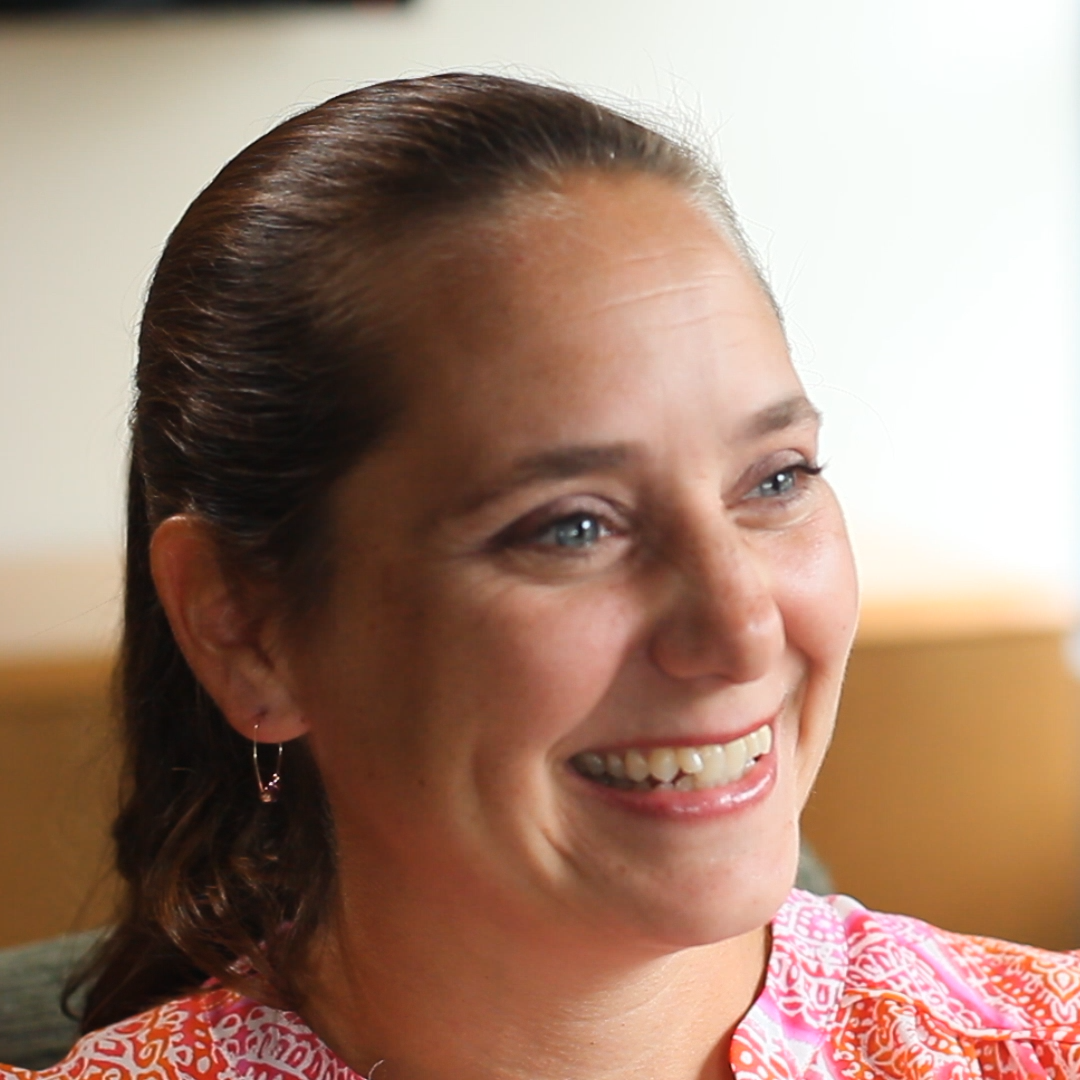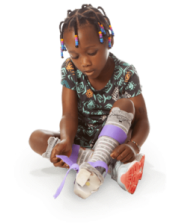What does a prognosis mean for a child with CP?
A cerebral palsy prognosis helps families understand how CP may affect the way their child grows and learns. It’s not a guarantee but a professional prediction based on how a child with cerebral palsy is developing so far, including their muscle tone, reflexes, and early milestones.
In most cases, a CP prognosis includes guidance on a child’s:
- Cognitive ability (thinking and learning)
- Life expectancy (how long they may live)
- Mobility (whether they may walk or use a wheelchair)
- Quality of life (overall physical and emotional well-being)
Doctors often delay making a full prognosis of CP until a child is at least 2 or 3 years old. That’s because babies with CP may show signs slowly over time — and some early motor skills can change as they grow.
Even then, a prognosis of cerebral palsy may change based on how a child responds to therapy, health care, or new challenges.
Waiting for a cerebral palsy prognosis can feel overwhelming, especially when your child is showing signs of CP but doesn’t yet have a diagnosis. Many parents feel stuck — unsure how to plan or where to turn for answers.
You don’t need a formal diagnosis to get support. Our registered nurses can help you understand what’s happening and what your child’s long-term outlook might be.
Connect with one of our nurses right now for an easy and informal chat — it’s always free to talk with our team.
What is the prognosis for cerebral palsy in 2025?
Early detection tools are improving, which may lead to earlier support and better long-term outcomes for children with cerebral palsy.
Here are some recent advances shaping cerebral palsy prognosis:
- AI is helping doctors look at baby movement videos: Artificial intelligence (AI) tools can now study how babies move in videos and spot early signs of CP as young as 3 months old.
- One test is already very accurate: The General Movements Assessment (GMA) can predict CP with up to 98% accuracy when done around 3 to 4 months of age.
- Parents may soon be able to help from home: Doctors are working on ways to use smartphone videos taken by parents to check for movement problems, which could make early screening easier for families.
- These tools are being tested around the world: A global team is building a version of the GMA that uses AI, so even families in remote areas could access early screening in the future.
- More babies are being included in research: Scientists are collecting videos from babies in many different countries and backgrounds to make sure these tools work well for everyone.
- Screening is not the same as diagnosis: These tools cannot confirm CP, but they can help find babies who may need therapy or follow-up sooner.
These innovations don’t change a child’s condition, but they can help families access therapy earlier, which may improve their child’s prognosis of cerebral palsy.
How doctors predict a child’s cerebral palsy prognosis
CP affects every child differently. Cerebral palsy specialists cannot predict the future with complete certainty, but they can gather important clues by looking at your child’s early development, medical history, and response to therapy.
- Brain imaging results: MRI or CT scans can show areas of damage in the brain that help doctors understand how severe the condition may be.
- Movement and reflexes: Doctors and therapists observe how a baby moves, including posture, spastic muscles, reflexes, and coordination.
- Feeding and breathing: Early trouble with swallowing or breathing may signal more complex needs or life-threatening risks.
- Vision and hearing: These senses are often evaluated early, since problems can affect development and independence.
- Response to therapy: How a child reacts to early occupational or physical therapy can give insight into their future abilities.
The full picture may take time to emerge. Most doctors wait until a child is at least 2 years old before making a more complete cerebral palsy prognosis, especially if symptoms are mild or mixed. But families don’t need to wait for a formal diagnosis to start getting help.
Support and therapy can begin early and may lead to better outcomes — especially when tailored to your child’s specific needs.
Signs that may affect cerebral palsy outcomes
Early signs of CP in babies, like stiff muscles or poor head control, can give families clues about their child’s cerebral palsy prognosis. While these don’t confirm a diagnosis, they may help predict future needs and guide early support.
Missed milestones and motor delays
When a baby isn’t reaching physical milestones as expected, it may signal early motor impairment.
- Favoring one side of the body
- Low or high muscle tone
- Poor balance or head control
- Trouble sitting, crawling, or walking
Tracking developmental delays helps shape early therapy goals and can offer insight into long-term mobility and function.
Warning signs of birth injury
Some medical issues right after birth may point to a preventable birth injury that later leads to a cerebral palsy diagnosis.
- Abnormal imaging results, showing brain injury
- Feeding or breathing problems in the first days of life
- Low Apgar scores or need for resuscitation
- NICU stay due to oxygen loss, seizures, or infection
If something feels off about your child’s delivery or care, a cerebral palsy attorney can help you understand if negligence may have played a role. Get a free legal case review right now to get started.
Can cerebral palsy prognosis get worse over time?
Cerebral palsy is considered a non-progressive condition, which means the original brain injury does not worsen over time. However, cerebral palsy progression can still involve new or changing symptoms as a child grows.
For example, a child may experience more noticeable differences in movement or posture as they get older and their muscles develop.
Pain, joint stiffness, and fatigue can also increase with age. Scoliosis, tight tendons, or other musculoskeletal issues may also develop later and require additional care.
These changes are not due to new brain damage but are related to how the body responds to the condition over time.
Therapy, cerebral palsy assistive devices, and care plans can help manage these symptoms and support better long-term outcomes. Regular check-ins with specialists are important to adjust care as needs change.

"My niece Cameron has cerebral palsy from a traumatic birth. With the right care and a major surgery, she went from a wheelchair to walking steadily — and now, as an adult, she lives on her own."
— Kristin Proctor, RNC-OB, Cerebral Palsy Guide on-staff registered nurse
How to improve your child’s prognosis for cerebral palsy
Getting the right care early can make a big difference in how a child with cerebral palsy grows and develops. While every child is different, there are ways to support better outcomes — starting with an early cerebral palsy diagnosis and a strong support system.
“Advances in early diagnosis make identification of cerebral palsy at as early as age 3 months possible, enabling timely, intensive early intervention that improves child and parent outcomes.”
— The Lancet Seminars
Early diagnosis helps doctors begin physical, speech, and occupational therapy at a younger age, when a child’s brain is still developing quickly. These therapies can improve movement, communication, and activities of daily living over time.
Access to care also matters. Families with access to consistent therapy, specialized medical care, and educational resources often see better progress and an improved cerebral palsy prognosis.
If you’re worried about the cost, there are cerebral palsy financial support options available to help cover expenses for treatment, mobility aids, home care, and more.
Even small improvements in early care can have a lasting impact on your child’s independence and quality of life.
Support for a better cerebral palsy outlook
Every parent wants to understand what their child’s future might look like. While the cerebral palsy prognosis is different for every child, early action and consistent care can make a powerful difference in long-term outcomes.
In some severe cases, children may face more complex challenges such as epilepsy, cognitive impairment, or intellectual disability. These conditions can influence prognosis, but do not define the child’s potential.
Sometimes, medical mistakes during pregnancy or birth may have contributed to a child’s condition. A cerebral palsy lawyer can help determine if negligence played a role and pursue compensation to support your child's needs.
We work with experienced cerebral palsy attorneys who have secured over $1 billion for families affected by preventable birth injuries. You may still have time to take legal action, even if your child doesn’t have a formal diagnosis yet.
Call our trained patient advocates at (855) 220-1101 or get a free case review right now to find out how we can help.





